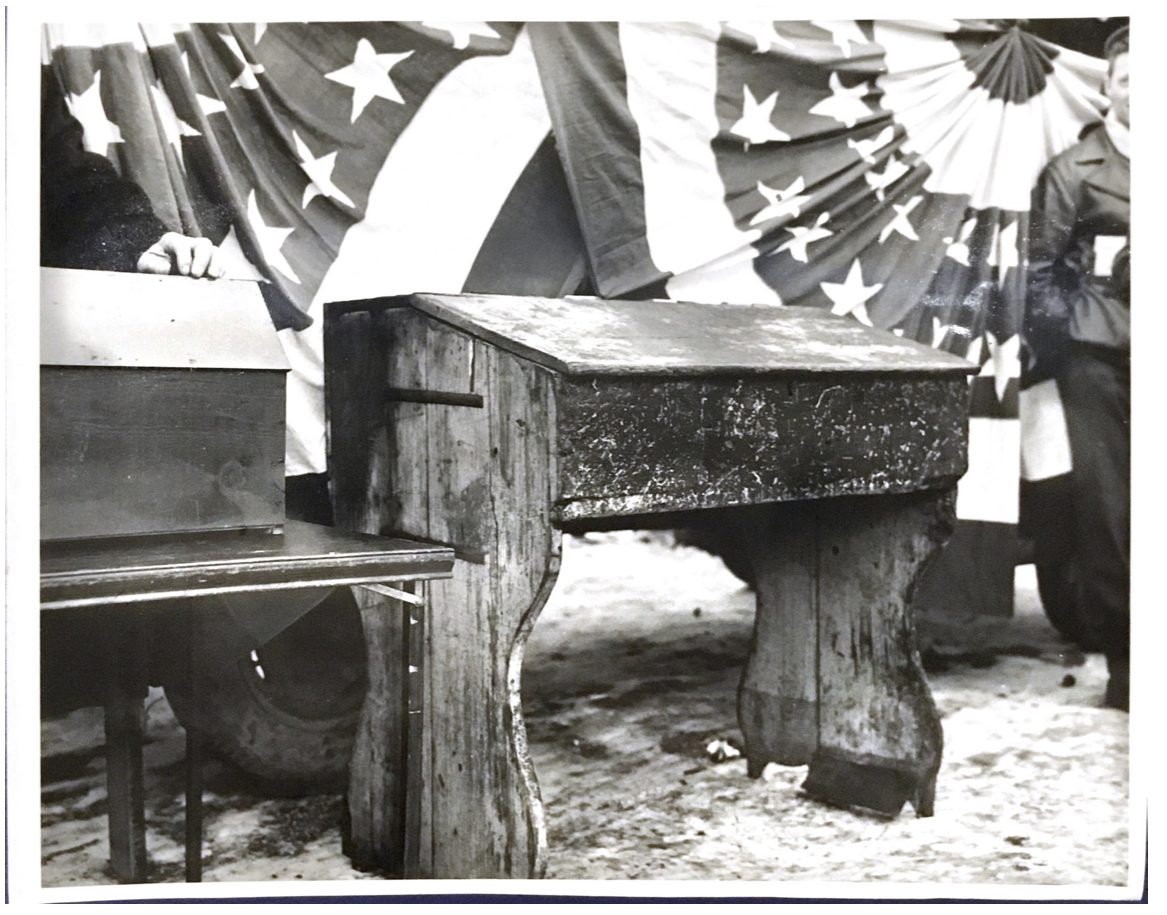There seem to be many possible motivations of the secession of Town Line from the Union. Like many Confederate sympathizers since the time of the Civil War, residents of Town Line today claim that states’ rights were a more pressing cause than the issue of slavery itself. The legend of a certain resident named Mary Willis is often cited in support of these claims. Willis is said to have overseen a stop on the Underground Railroad in the town itself. (1) Her sympathy with the abolitionist cause complicates what might have been a clear-cut story about a northern Confederate movement, since there were evidently anti-slavery sentiments in town, despite its secession from the Union. Furthermore, the story of Willis is contested by some texts in that the stop might not have been located in Town Line, but simply aided by Lewis, a Town Line resident. (2) Clearly there are contradictions in this narrative, and it isn’t quite conclusive.
Perhaps more convincing is the local narrative regarding the German culture of the hamlet prior to the Civil War. From 1815 to 1848, Hessian immigrants settled in the area around Buffalo, New York after fleeing their home country. Germany was ruled in “despotism and ruinous extravagance” at the time, leading many German immigrants to be weary of a strong federal government. (3) Therefore, these views may have led the residents to be more sympathetic or interested in the views of the Confederacy when the Civil War began.
When news of civil war made its way to Town Line, the residents were divided over which side to support. Based on a PowerPoint made by Lisa Blair, it seems that George Bruce (a Democrat from the Town Line “Party of the Immigrants”) and Thurston Carpenter (a Republican from the Town Line “Party of the Natural Born Citizen”) led the two competing ideologies about the Civil War. At some point, George Bruce’s group decided that their beliefs in hands-off government aligned strongly enough with the Confederacy that secession would be an option. (4)
In 1861 the residents voted in a local blacksmith shop 85-40 to secede from the Union. (1) The town remained divided to some degree, however, because evidence shows that 7 residents fought for the North and 5 fought for the South. Passed down histories indicate that the region around Town Line was dissatisfied with the decision to secede. As found in a presentation prepared by Lisa Blair, one man from the nearby town of Lancaster, George Huber, was quoted as saying:
We the people of the village were a bit embarrassed when Town Line seceded from the Union by a vote of its citizens. (4)

Photographed here is the desk located in the local blacksmith shop on which both the seceding and rejoining votes took place. The desk is now located at the Alden Historical Society. (5)
To learn more about the history of Town Line, head to the following page for more information.
(1) Document from Blair’s Hardware found on Oct. 19, 2018.
(2) Stephen V. Feeley, “Nearby hamlet left Union in Civil War days,” Buffalo Courier Express, Feb. 21, 1937.
(3) Ellen Taussig, Buffalo Evening News Feature Writer, “Ankummling” article found at Blair’s Hardware in Town Line, NY on Oct. 19, 2018.
(4) PowerPoint prepared by Lisa Blair. Found at Blair’s Hardware in Town Line, NY on Oct. 19, 2018.
(5) Photograph from Blair’s Hardware on Oct. 19, 2018.